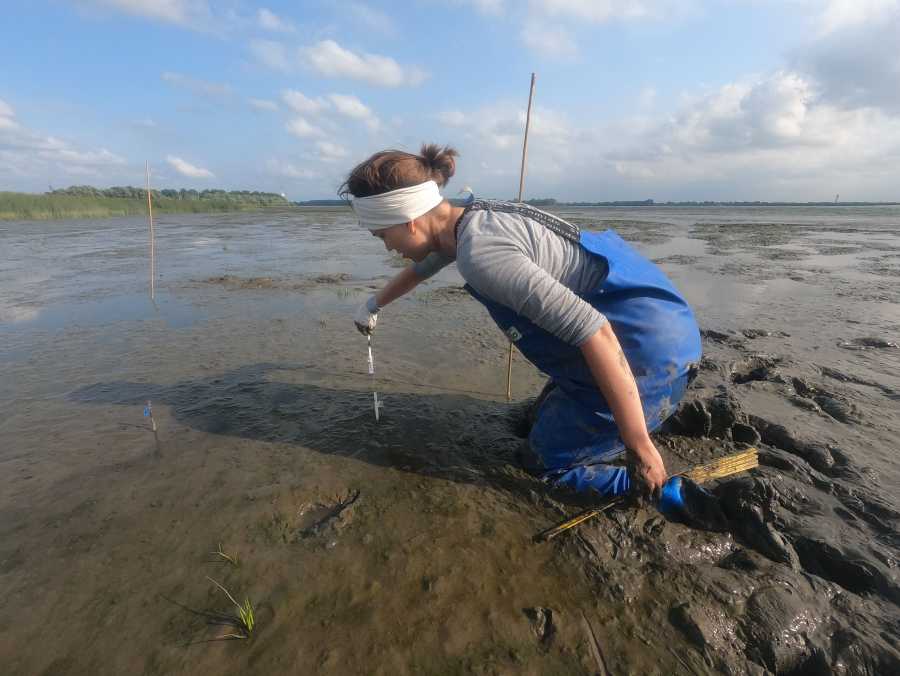Field Studies
Wadden Sea tidal flats, Germany

Coastal sediments such as tidal flats and salt marshes experience fluctuating redox conditions with the ebb and flow of tidal cycles, and therefore provide a fascinating environment for us to study the transformation of iron minerals.
The three field sites span the salinity gradient along the Elbe Estuary reaching the Wadden Sea in the Northwest and approaching Hamburg in the Southeast and include both intertidal flat and salt marsh environments. This area is home to the unique Watt sediments (external page soil of the year 2020) and is the largest area of intertidal flats in the world.
Kath, Luiza, Giulia and Joëlle visited the Wadden Sea over three field seasons to collect various sediment for laboratory experiments and characterization. The team has investigated the Fe(II)-catalysed transformation of ferrihydrite, the sulfidation of vivianite, lepidocrocite, and goethite, and the oxidation of siderite in-situ.
Rice paddy fields, Thailand

Rice is a staple crop for millions of people across the world. In many parts of the world, including in Thailand, rice fields are flooded for extended periods of time during the growing season. Flooding may reduce oxygen penetration of the soil and cause iron mineral transformations. The IRMIDYN team's experiments will examine the mineral transformations in paddy soils in two different regions of Thailand.
Andrew will examine the stability of jarosite and aluminium-substituted jarosite in an acid sulfate soil in the central provinces of Thailand. These soils are heavy in clay and produce large quantities of acid under oxic conditions. Jarosite is a dominant iron mineral in these soils, and may have an important role on the cycling of other elements in the soil.
Katrin will study the transformation of ferrihydrite and lepidocrocite in soils from the North-East of Thailand. These soils are sandy and highly weathered, but the iron cycle is dynamic and short-range ordered minerals such as ferrihydrite and lepidocrocite are likely to play an important role in the biogeochemistry of the soils.
Members of the team, with collaborative assistance from Worachart Wissawapipat (Kasetsart University, Thailand) undertook an exploratory trip in March 2019, performed sampling in February 2020 and completed field experiments in mid-2021.











